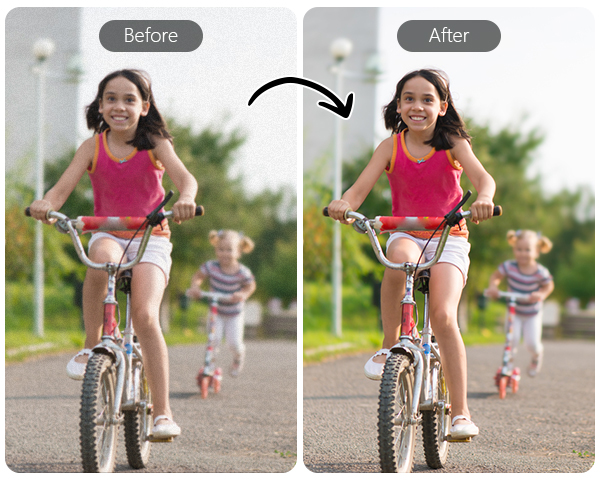Even when you thought a scene was flawlessly captured, upon magnifying you notice a blurred mess? Improve Resolution of a Photo degrade great moments, whether you're printing them, sharing online, or utilizing them professionally.

Why does this matter to Photographic resolution?
Before we move to discovering the answers on how to increase the resolution of a photograph, it is important to have an idea of why the resolution affects quality.
Printing Low-res graphics appear pixilated on large print.
Social Media: Platforms compress photos, making poor-quality images worse.
Professional Use: Clients anticipate crisp, high-definition aesthetics. If you’ve ever attempted to enhance picture excellence just to make it worse, you’re not alone. Many individuals stretch images, over-sharpen, or utilize incorrect tools—leading to artificial-looking results.
How to Improve Resolution of a Photo (5 Best Methods)
Employ an AI Image Enhancer (Quickest Solution)
AI-powered programs like PixelFox.ai dissect your image and improve resolution of a photo without losing detail.
Pros:
Immediately sharpens blurred areas
Enhances textures and colors Works for outdated, grainy photos
Cons:
Some tools necessitate remuneration for HD outputs How to utilize an AI image enhancer:
Upload your photo to PixelFox.ai Select the enhancement level (2x, 4x, etc.) Download your high-res image in seconds
Transformation of Resolution manually through Photoshop
For a hands on editing experience, Photoshop's Super Resolution feature assists in improving an image's resolution.
Procedure: In photoshop, open photograph.
Navigate to Image > Image Size. Select "Resample" and choose "Preserve Details 2.0". Increase dimensions (but avoid exaggerated upscaling). ⚠ Warning Excessive enlargement can cause artifacts.
Employ AI tools for extreme increases in scale.
Modify Sharpness and Reduce Noise
Sometimes, better resolution involves clarity rather than size.
Sharpen edges (though don't overdo it).
Diminish grain in low quality photos.
Use Lightroom's Enhance Details for RAW files.
Shoot in RAW (Prevent Low Quality photo from the Onset)
RAW files have more data than JPEG, in case your camera has it, creating the possibility of quality enhancement later.
Warding-off These Mistakes That Dilute Your Resolutions
Stretching images (distorts pixels).
Excessive data compression (loses detail).
Employing inexpensive upscalers (fabricates details).
Specialized Techniques for Professional-Caliber Photo Resolution Amplification
For photographers and designers requiring utmost results, these professional methods can take your image enhancement to new heights:
A Multi-Stage Refining Process
In many cases, resolutions providing the best boosts are products of several techniques combined
Initial AI Upscaling (2-4x the use of equipment like PixelFox)
Selective Manual Sharpening (Photoshop's Smart Sharpen with masks)
Noise Reduction (Topaz Denoise AI for easy effects)
Texture Enhancement (Frequency separation tactics)
Final Color Grading (To restore vibrancy misplaced all through processing)
This layered method keeps most detail at the same time as minimizing artifacts often associated with single-step enhancement.
Skilled retouchers differentiate between:
Native Resolution (Actual captured pixel data)
Effective Resolution (Perceived detail post enhancement)
A well-processed image can achieve 2-3x higher effective resolution than its native pixel dimensions indicate.
Hence why some enhanced 12MP photos can rival native 24MP shots with proper handling.
The Role of Machine Learning in Modern Enhancement
Cutting-edge enhancement now leverages advanced machine learning techniques to achieve photographic results that were previously impossible.
Generative adversarial networks create hyper-realistic details by training opposing neural networks against one another.
Attention mechanisms allow the algorithm to focus only on pertinent areas of an image. Style transfer techniques maintain authenticity by studying photographic styles and preserving them.
These technologies empower tools like PixelFox to dramatically improve resolution while retaining natural appearance.
However, enhancement is not always recommended. Surprisingly, there are instances where enhancing resolution causes more harm than good.
With security footage, artificial details may be introduced that distort the truth. Medical and scientific imaging demand absolute accuracy, leaving no room for alterations. Additionally, legal and forensic evidence raises issues regarding chain of custody if modified. Prior to processing significant photographs, their intended application must be carefully considered.
The future promises even greater heights in resolution enhancement.
Emerging tools may incorporate depth maps to understand 3D structure. Multiple frames could be analyzed to generate photo quality enhancer video.
Material recognition may better process diverse surfaces.
Real-time enhancement could benefit video calls and live photography.
Such advances will make high-level processing accessible to all, not just professionals. For early adopters of complex techniques, subtlety remains key. Imperceptible enhancement often yields the most natural appearance, where viewers perceive only high quality, not noticing the technology behind it.
Start conservatively and gradually increase until achieving the ideal balance of information and authenticity.

Best Free & Paid AI Photo Enhancers
FAQs:
Q1: Is it truly possible to boost the resolution of an image with deficient quality?
A: Indeed, while technology cannot conjure invisible particulars, artificial intelligence photo enhancers and practiced modification can sharpen, magnify, and refine indistinct shots for enhanced lucidity.
Q2: What is the most effortless approach to amplify photographic resolution?
A: Utilizing a neural system image intensifier is the speediest technique. Instruments like PixelFox.ai immediately dissect and upscale pictures in seconds with minimal work.
Q3:Does Photoshop better upgrade resolution than gratis tools?
A: While Photoshop offers progressive control, AI devices often create more superb consequences for extreme magnification. For swift fixes, AI is more effective.
Q4: Why does my photograph appear worse after expanding resolution?
A: If one extends an illustration too much or applies a low-quality magnifier, it can generate pixelation or synthetic particulars. Consistently employ AI-founded intensifiers for natural-looking conclusions.
Q5: Can I renovate an old, grainy photograph?
A: Indeed! AI tools excel at restoring outdated shots by decreasing noise, remedying blurriness, and improving facial subtleties—excellent for scanned family portraits.
Final Thoughts:
Ultimate Hints to improve Resolution of a photo Always support unique copies preceding modifyingEmploy lossless platforms like PNG or TIFFExperiment with diverse instruments before finalizing edits